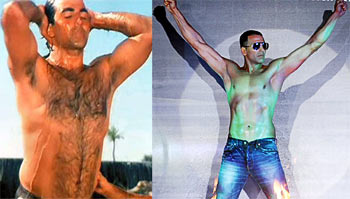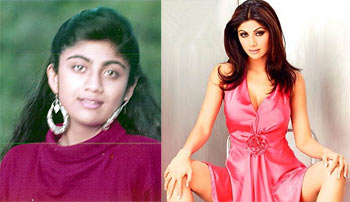
Since the evolution of primates into human beings, body hair has been a crucial factor separating us from animals and hair growth patterns have been equally important to differentiate between the genders.
A smooth, hair-free face and body is a much-desired feminine trait. Men too have become extremely selective about the hair they want to maintain and the hair they don't -- metrosexuals no longer desire heavy bushy eyebrows that meet, or even chest hair for that matter (take Salman Khan, for instance!). Hair removal is thus an important part of both hygiene and appearances.
Dr Parul S Kolhe is an MBBS and holds a DDV & DNB in dermatology.

Traditional hair removal methods include:
The advantage of these methods is, of course, convenience. They're cheap and you can perform them yourself at home. However, all the above options are a rather painful prospect -- they pull the hair out by the root, cause follicular damage and leave behind open, gaping follicles which are entry doors for bacteria to enter and cause folliculitis (painful boils along the hair roots).
Moreover, allergies and inflammations are possible, not to mention burns from hot wax, which can leave behind unsightly spots of pigmentation.

Shaving and depilatory creams are painless alternatives as compared to waxing, plucking and threading. However, they are not without their own shortcomings.
Depilatory creams break down the keratin content in the hair and weaken it. To do so, they contain strong chemicals that can cause skin irritation and the effects are short-term -- hair can start to grow back within less than a week.
Shaving is the relatively safest traditional hair-removing technique and contrary to popular belief, it does not increase the number or thickness of hair. It does, however, lead to ingrown hair and coarse skin. Like depilatory creams, the effects are far from long-lasting and shaving has to be repeated every few days.

The most effective long-term removal methods today are the laser and IPLs (intense pulsed light systems, somewhat similar to lasers).
Although a lot of machines are being advertised as lasers, don't fall into the trap and believe every laser hair removal advertisement you see. The most effective systems currently existing are Diode, NdYAG and IPL/VPL.
In these techniques, the hair is first shaved off, leaving the roots intact and a laser probe is then passed over the area, 'shooting' each square centimetre of skin sequentially, till the whole area is covered. The laser energy is of a particular wavelength and is selectively absorbed by hair roots, thus destroying them and causing minimal or no damage to the surrounding skin.
Thus, the thicker the hair (like underarms or sideburns), the more laser energy it absorbs and the more effectively it gets destroyed. Dormant or 'sleeping' hair follicles are missed by the laser and they grow back, necessitating repeated sessions, but you can expect to be hair-free for a few months between sittings. At the end of your sessions, the number and thickness of hair growing back is permanently decreased. You can technically never reach the '0 hair' target, a few sessions can make your hair so fine, light and sparse that your skin looks cosmetically flawless.

The number of laser/IPL sessions required vary from person to person and with the machine used. The Diode laser requires the least sessions; NdYAG requires slightly more and the IPL the maximum sessions. The NdYAG laser is safer for dark-skinned people.
At the end of the day, it is the experience and knowledge of the dermatologist behind the machine rather than the machine itself that determines the possibility of side-effects. The power settings and other parameters, if judiciously selected by your doctor, can minimise side effects. Mild redness and swelling for upto a day can be seen post laser treatment. At high energy levels, superficial skin burns can occur, but these heal quickly and usually leave no marks.
Lasers have heralded a new era of hassle-free hairlessness that is long-lasting, safe and can be used by men and women alike. But then again, this treatment doesn't come cheap, so be prepared to shell out a neat packet over the course of several sessions.